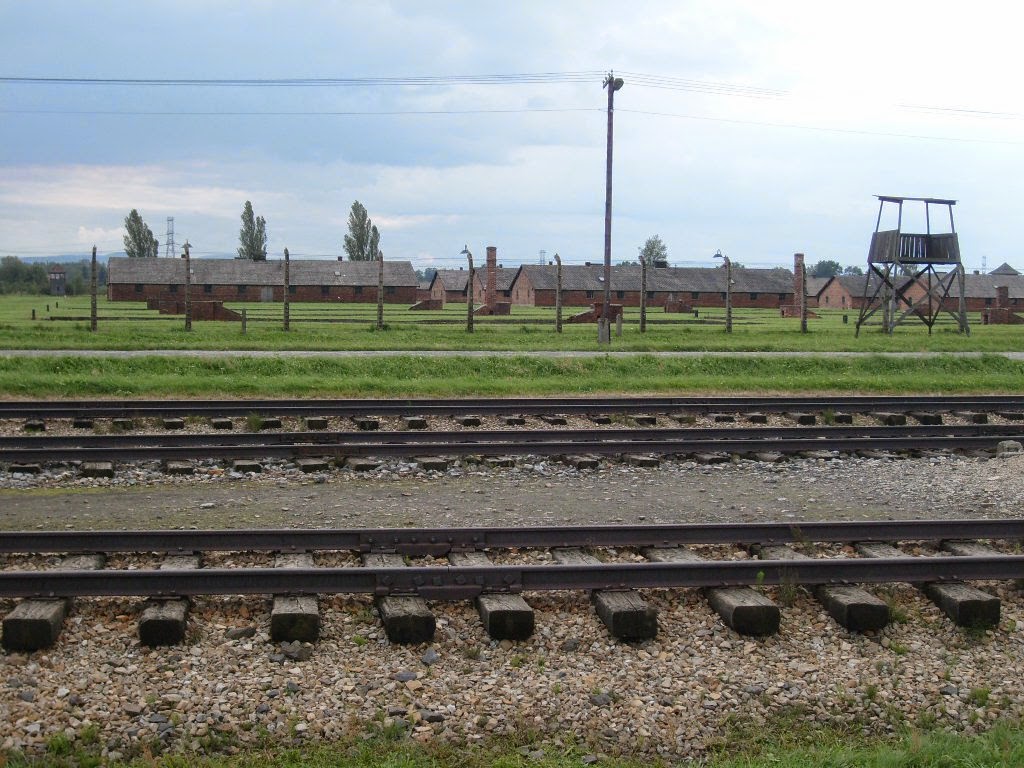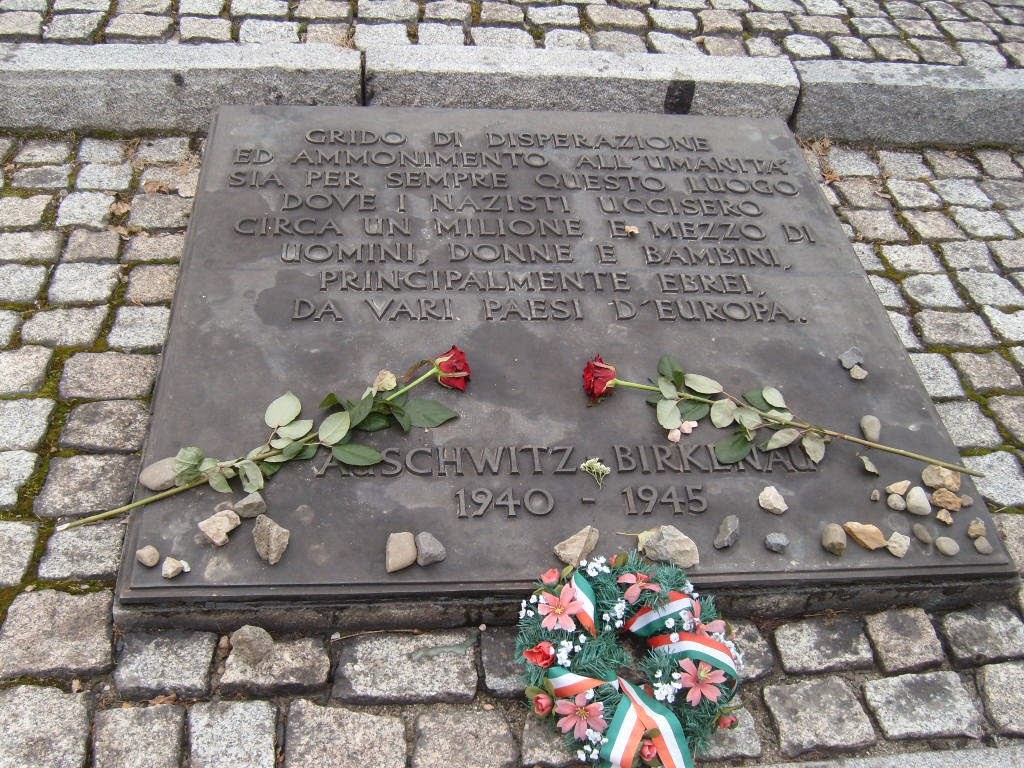In
occasione dei 70 anni dalla liberazione del campo di concentramento di
Auschwitz-Birkenau, volevo condividere con voi qualche immagine e informazione (per i visitatori) riguardante il più tristemente noto campo di concentramento nazista.
Già, proprio il 27 gennaio 1945 le truppe sovietiche varcarono per la
prima volta il cancello del (purtroppo) famoso campo di sterminio di Auschwitz, rivelando al mondo l'orrore del genocidio
nazista.Nonostante siano trascorsi 70 anni, ogni 27 gennaio viene celebrato il 'Giorno della memoria' per commemorare le vittime e per 'non dimenticare' affinchè l'orrore non si ripeta mai più.
On the occasion of the 70th anniversary of the liberation of the concentration camp of Auschwitz-Birkenau, I wanted to share with you some pictures and information (for visitors) concerning the most notorious Nazi concentration camp.
Yeah, January 27, 1945, Soviet troops crossed for the first time the gate of the (unfortunately) famous Polish death camp, revealing to the world the horror of the Nazi genocide.
Despite the passage of 70 years, every January 27th is celebrated the 'Memorial Day' to commemorate the victims and to 'never forget' so that the horror does not happen again.
COME ARRIVARE AD AUSCHWITZ:
Raggiungere il campo è davvero molto semplice, anche senza dover ricorrere a uno dei tanti tour operator.
Dalla stazione principale dei bus di Cracovia, per pochi euro, troverete numerosi pulmini con direzione Oswiecim e così, in meno di un'ora, vi troverete di fronte al cancello dalla nota scritta 'ARBEIT MACHT FREI' ('il lavoro rende liberi').
Per circa 10 euro, consiglio di prender parte ad una visita guidata (ce ne sono anche in italiano).
La visita (gratuita se si entra prima delle 10) dura circa 3-4 ore, e ha una carica emotiva di rara potenza.
Ci sono due campi e li vedrete
entrambi: si parte da Auschwitz, per poi terminare il giro a Birkenau.
HOW TO GET TO AUSCHWITZ:
HOW TO GET TO AUSCHWITZ:
Getting to the camp is very simple, even without the need for one of the many tour operators.
From the main bus station in Krakow, for a few euros, you will find many little buses with direction Oswiecim and so, in less than an hour, you will be in front of he gate with the famous phrase 'Arbeit Macht Frei' ('work makes you free') .
For about 10 euro, join a guided tour.
The tour (free if you enter before 10 a.m.) lasts about 3-4 hours, and it has an emotional charge of rare power.
There are two camps and you will see them both: starting from Auschwitz, to finish the tour at Birkenau.
From the main bus station in Krakow, for a few euros, you will find many little buses with direction Oswiecim and so, in less than an hour, you will be in front of he gate with the famous phrase 'Arbeit Macht Frei' ('work makes you free') .
For about 10 euro, join a guided tour.
The tour (free if you enter before 10 a.m.) lasts about 3-4 hours, and it has an emotional charge of rare power.
There are two camps and you will see them both: starting from Auschwitz, to finish the tour at Birkenau.
AUSCHWITZ
La vostra visita avrà inizio proprio ad Auschwitz, una caserma polacca abbandonata, nei sobborghi della piccola Oswiecim, nei pressi di un importante nodo ferroviario (una tale ubicazione del campo vi facilitava la deportazione dei prigionieri), riutilizzata dai nazisti.
Insieme alla guida attraverserete immensi viali, lungo i quali incontrerete gruppi di giovani tedeschi alle prese con i lavori di manutenzione del campo (un modo per chiedere scusa al mondo da parte della Germania), esplorerete i fabbricati e i luoghi più importanti: l'edificio che ospita il museo (in cui sono conservati capelli, scarpe, abiti, fotografie e altri beni personali dei deportati); il Blocco 11, chiamato Blocco della Morte, dove erano situate le celle e nei cui scantinati le SS effettuarono i primi esperimenti di sterminio in massa mediante l'utilizzo del gas Zyklon B; la Parete della Morte, davanti alla quale avvenivano le fucilazioni; uno dei pochi crematori rimasti (la maggior parte furono distrutti dagli stessi nazisti poco prima della liberazione del campo).
Your visit will begin at Auschwitz, a Polish abandoned military barracks, in the suburbs of the small Oswiecim, near a major railway hub (this location of the camp facilitated the deportation of prisoners), re-used by the Nazis.
Along with the guide you'll cross the immense avenues, along which you will meet groups of young Germans grappling with maintenance works of the camp (a way to apologize to the world by Germany), and you'll explore the most important buildings and places: the building that houses the museum (which preserves hair, shoes, clothes, photographs and other personal property of the deportees); Block 11, called Death Block, where the cells were located, and where, in the basements, the SS began the first experiments of mass extermination by the use of Zyklon B gas; the Wall of Death, where the shootings took place; one of the few remaining crematoria (most were destroyed by the Nazis shortly before the liberation of the camp).
E' veramente inquietante pensare che queste stesse camerate, questi stessi corridoi, questi stessi cortili, durante la Seconda Guerra Mondiale, hanno visto soffrire e morire un numero inimmaginabile di ebrei, oppositori politici, omosessuali, zingari.
Si tratta di un'esperienza forte che non dimenticherete facilmente.
It's really disturbing to think that these same dormitories, these same corridors, these same courts, during the Second World War, were the scene of the death and suffering of an unimaginable number of Jews, political opponents, homosexuals, gypsies.
It is a powerful experience that will not easily forget.
BIRKENAU
La vostra visita proseguirà poi a Birkenau, distante circa 3 km da Auschwitz.
Per andare da Auschwitz a Birkenau c'è una navetta gratuita che parte ogni mezz'ora e che collega tra loro i due campi.
Il campo di Birkenau è forse ancora più sconvolgente: qui visiterete gli interni delle baracche di legno e delle latrine, prendendo coscienza delle terribili condizioni abitative.
Infine, prima di iniziare il giro è possibile assistere ad un film girato dai soldati sovietici che liberarono il campo.
Then, your visit will continue to Birkenau, about 3 kilometers from Auschwitz.
To go from Auschwitz to Birkenau there is a free shuttle that runs every half hour and that connects the two camps.
The Birkenau camp is perhaps even more shocking: here, you'll visit the interiors of wooden barracks and latrines, becoming aware of the terrible housing conditions.
Finally, before the start of the tour you can watch a movie filmed by Soviet soldiers who liberated the camp.



.jpg)











Good post. I learn something totally new and challenging on blogs
RispondiEliminaI stumbleupon everyday. It will always be useful
to read content from other authors and practice something from their sites.